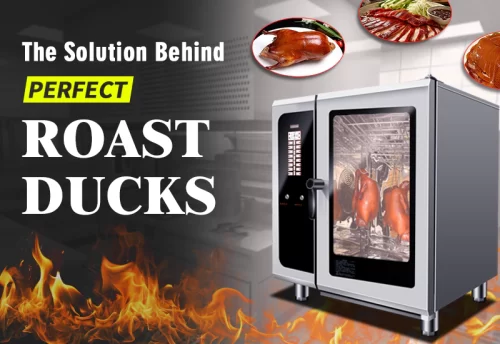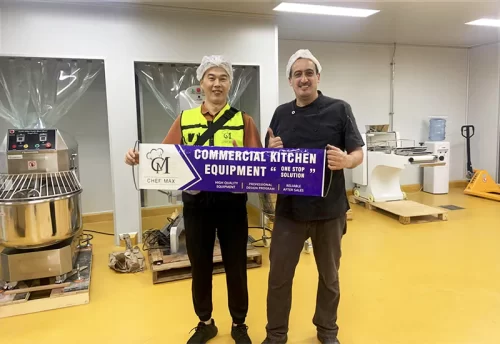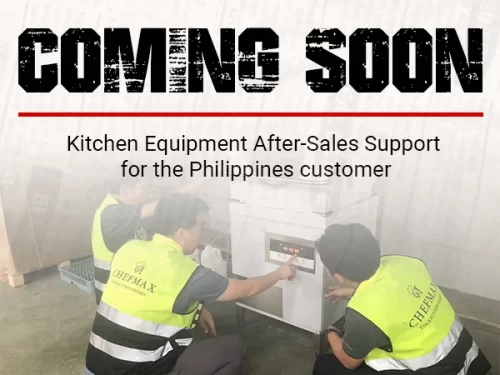8 Tips for Maintaining Commercial Refrigeration Equipment
Commercial refrigeration equipment is one of the most commonly used pieces of equipment in almost every commercial kitchen and operates almost 24/7 year round. It cools all your ingredients or beverages to perfection so that you always have the ultimate taste and freshness at the time of serving. That’s why maintaining your refrigeration equipment has become even more important, so how do you do it? Here are some maintenance tips from Chefmax to keep your equipment clean and running strong at all times.
Table of Contents
1. Clean regularly
In order to keep your commercial refrigeration running efficiently, you should clean your unit regularly, both inside and out. To clean it, you can remove the interior items and place them in another unit or temporary cooler, scrub the partitions and surfaces with warm water and soap. If you can remove the inside partitions, soak them for a while and then rinse them off and put them back on, but please note that the power needs to be turned off before cleaning. The outside of the unit should also be cleaned, including the fan blades and condenser, to ensure that their surfaces are free of dust and debris and that your commercial refrigeration equipment is always operating efficiently.
2. Regular inspection of parts
Compressor: We should always observe the oil level and oil return of the compressor and the cleanliness of the oil, and find that the oil is dirty or the oil level has dropped to solve in time to avoid poor lubrication. Often observe the operation status of the compressor, check its exhaust temperature, and pay special attention to the operation status of the system when running in the new season, and adjust the system liquid supply and condensing temperature in time. In addition, we recommend that you clean the dust on the surface of the compressor set every day.
Evaporator: you need to check the defrost situation frequently, whether the defrost is timely and effective, it will affect the refrigeration effect and lead to the return of liquid in the refrigeration system.
Wire connectors: you need to regularly check the wire connectors are not loose, broken or damp to ensure that your equipment is safe to run. If there are some small problems you can also be found and dealt with in a timely manner, to avoid a larger failure in the future.
Drainage: This is also a point that you should pay attention to, to ensure that clean and no foreign objects exist at all times. If the drainage port is blocked, it will cause the refrigeration effect of the commercial refrigerator to become poor, so that the motor damage phenomenon, so we recommend that you can clean the drainage port twice in a week.

3. Clean the condenser coil
The function of the condenser coil on the commercial fridge is to cool and condense the refrigerant, which is achieved by using a fan to draw in outside ambient air from around the cabinet. Therefore, in this process, dust and debris etc. will be drawn in. If there is a lot of dust attached to these surfaces, that will accumulate over a long period of time and form an insulating layer that will lead to clogging of the condenser coil, which will cause the refrigerator to consume more energy and therefore the compressor will run longer and stronger, or even cause the components to fail.
4. Clean the evaporator coil
Like the Condenser Coil, the evaporator coil is an important part of your commercial refrigerator. Located next to the evaporator fan, the evaporator coil’s job is to absorb heat as warm air passes through and help cool commercial refrigeration equipment. failure to keep the evaporator coil clean or clear clogs can cause your unit to underperform or even overperform, which means you’ll pay higher electric bills, which you can increase by using a small You can increase airflow by realigning the fan with a small evaporator comb and using a powerful coil cleaner to remove excess grease and grime. Cleaning the coils is especially important if your refrigeration unit is near cooking equipment such as commercial deep fryers or commercial griddles.
5. Check Gaskets Frequently
Door gaskets are an essential part of every commercial refrigeration, and any type of crack can affect the seal of the refrigerator and cause cold air to leak out from inside the refrigerator. Keep an eye on it, and if your gasket is broken, be sure to replace it as recommended by your supplier to ensure that the gasket is a match for your commercial fridge. If there are no cracks, you should still clean the gasket regularly to prevent damage. This should be done more frequently if the unit is located in a commercial kitchen where grease is used frequently. Over time, excessive grease and grime will wear out the gasket.
6. Replace air filters
Commercial fridge equipment air filters play a vital role in the efficiency of refrigeration, and if they become clogged with debris or accumulate grease, the unit cannot be properly ventilated, or even cause it to fail to operate at all. You may need to vacuum up as much dust or debris as possible and then wipe it down with a degreasing solution. If the commercial refrigeration unit has too much grease or a damaged air filter, consider replacing the air filter.
7. Proper storage
The food or other ingredients in the cabinet try not to be stuffed full, generally not more than 80%, otherwise it will affect the air convection in the cabinet, causing difficulties in heat dissipation, affecting the preservation effect and increasing power consumption, in addition to placing the food when you pay attention not to block the air outlet. If necessary, you can add a refrigerator to meet your storage needs.
8. Keep your equipment dry
Keep your equipment dry at all times, both externally and internally you should clean up any water in a timely manner. Excessive moisture can cause cooling problems, especially if the moisture is coming from inside. Make sure to regularly wipe off any water or liquid that has accumulated inside your commercial refrigeration equipment unit. In addition, no heavy objects should be placed on top of your refrigeration equipment unit.






























